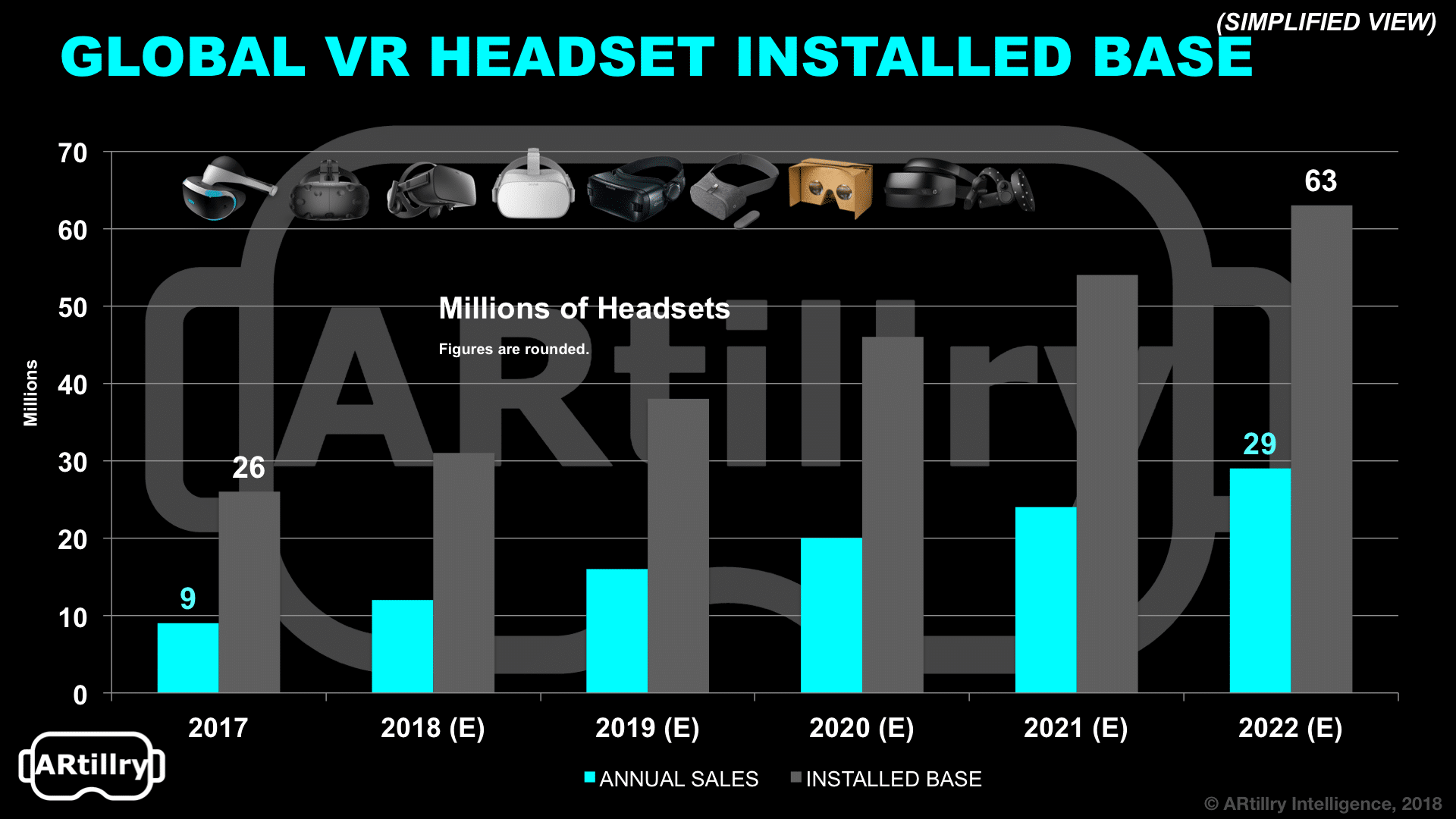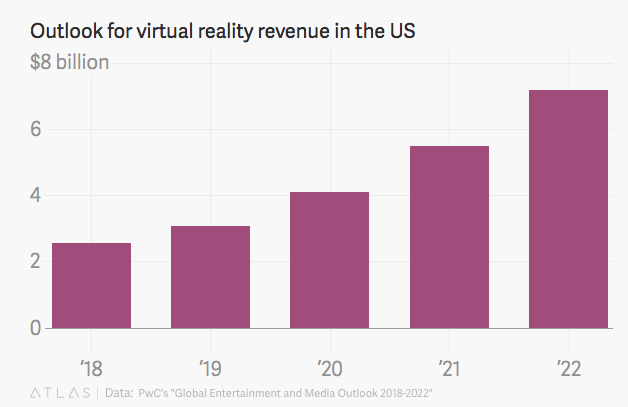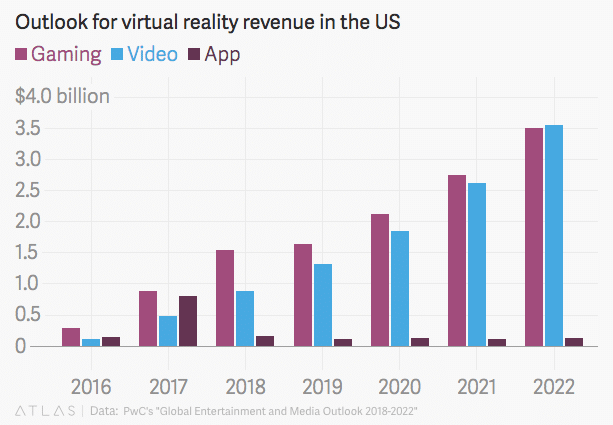
Data Point of the Week is ARtillry’s weekly dive into data from around the XR universe. Spanning usage and market-sizing data, it’s meant to draw insights for XR players, or would-be entrants. To see an indexed archive of data briefs and slide bank, subscribe to ARtillry Pro.
It’s clear that consumer VR headset sales have been lower than the 2016 hype cycle indicated. The XR industry is reigning back expectations for this key leading indicator (hardware base), while keeping a cautiously optimistic view of eventual growth. VR isn’t dead… it’s just early.
With that backdrop, PwC has released its outlook on headset penetration, projecting 55 million active units (installed base) by 2022. Interestingly, this would make VR exceed Netflix, at least in terms of user count — notwithstanding more nuanced behavioral patterns like usage frequency.
This figure is just shy of ARtillry Intelligence’s projected 63 million installed base by 2022, but that’s a global figure (PwC is measuring U.S. only). So in the end, PwC is a bit more optimistic, which is okay. Also note the difference between annual unit sales and cumulative installed base.

Going one level deeper, PwC projects VR revenues of $7.2 billion by 2022, up from $414 million last year, a 40 percent CAGR (again, U.S. only). It’s unclear how this breaks down by hardware versus software revenue, but there is revenue segmentation for games, video and apps.
Not surprisingly, games are in the lead today but will be eclipsed by video by 2022. We would surmise that this is due to the rise in standalone VR headsets, which are more conducive to lean-back video. This trend could sustain but gaming capability will also evolve for standalone VR.
See the data below and stay tuned for lots more market sizing and forecasting data, including ARtillry Intelligence’s spring XR revenue forecast, which we’ll release tomorrow.


For deeper XR data and intelligence, join ARtillry PRO and subscribe to the free ARtillry Weekly newsletter.
Disclosure: ARtillry has no financial stake in the companies mentioned in this post, nor received payment for its production. Disclosure and ethics policy can be seen here.
Header image credit: Oculus
